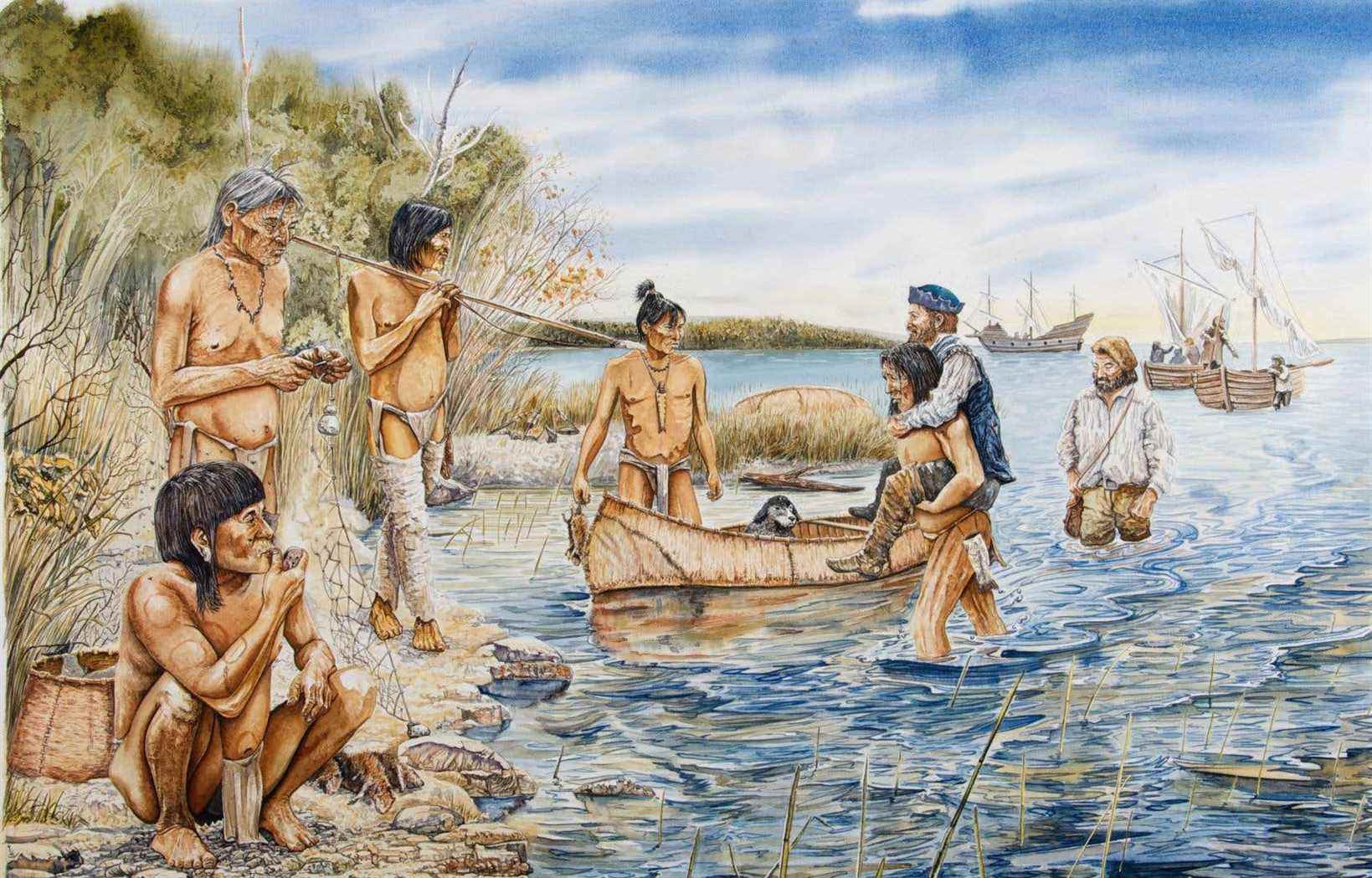Long before receiving a visit from Jacques Cartier and his crew, the Iroquoians of the St.Lawrence, this mysterious indigenous group whose descendants are disputed today, hunted white-tailed deer on the game-rich heights of the island of Montreal. , cultivated the land there and had built a village there.
When Cartier visited the island in 1535, he found a village of 1,500 to 2,000 people, surrounded by a wooden palisade. The inhabitants lived there in about fifty longhouses managed by women, says Roland Viau in his book People of the river, people of the island: Hochelaga in Laurentia Iroquoian in the XVIe century, published by Boréal. Today, the question is on everyone’s lips; Are the descendants of these first “Montrealers” Mohawk, Huron or Algonquin?
The debate was rekindled by the message of recognition of Montreal as unceded Indigenous territory that the Canadiens hockey team Montreal decided to state before each game. In the first version of this message, the Canadian thanked the Mohawk nation for “its hospitality on the traditional territory”.
Then, reacting to a hail of criticism, the hockey team on Saturday changed the wording of its declaration to identify the Mohawk nation as the “guardian of the land” of the island of Montreal. The new wording also says: “Tiohtià: ke / Montreal is historically known as a meeting place for First Peoples”.
The Montreal Canadiens “went a bit fast,” notes Roland Viau. It has not been established that Hochelaga is a traditional Mohawk territory. But it is an indigenous territory. “
In fact, the Aboriginals who were on the island of Montreal when Cartier arrived were part of a distinct nation that has now disappeared or dispersed, the Iroquoians of the St.Lawrence, whose descendants would be more integrated on the side of the Algonquins, according to Roland Viau.
These Iroquoians, Jacques Cartier met them twice, during his two trips to Montreal. Then, when Champlain returned, in 1603, they were no longer on the island. “What happened to Iroquoian Laurentia remains a mystery and remains one of the greatest enigmas in Amerindian archeology,” writes Roland Viau.
Roland Viau believes for his part in a disappearance because of epidemics, these being linked in particular to the arrival in the valley of the St. Lawrence of European cattle intended for the colonization of New France.
A land widowed by its inhabitants
“My interpretation is that it is not a land that has been abandoned, but rather a widow land, that is to say a land that has been emptied of its inhabitants. […] Weakened by disease, they became incapable or unfit to counter the attacks of their traditional enemies and they had to leave, ”he says.
Where would they have gone? This is what everyone is wondering. Roland Viau believes that it was among the Algonquians, or Anichinabe, who populated the Ottawa Valley, that the Iroquoians found refuge. It is this interpretation that calls into question the occupation of the land by the ancestors of the Mohawks since time immemorial.
“The Algonquians were in the Ottawa Valley,” he continues. The Hochelaguians, weakened by disease and defeated by wars, moved and went to their cousins the Algonquians, ”he says.
Roland Viau notably uses two arguments to flesh out his thesis. First, he evokes the testimony of Algonquians met by Montmagny and Maisonneuve during the founding of Montreal. These would have said to be “of the nation of those who had formerly inhabited this Isle”, noted the missionary Barthélémy Vimont, who took part in the event. One would also have specified that his grandfather had cultivated the land, where Indian corn grew well and the sun was good.
Make DNA speak
Roland Viau also relies on the fact that the pottery of the Iroquoians is easily recognizable. It is, he says, “more stylized, and the patterns are highly sought after. Personally, I find it the most beautiful and the most sophisticated ”.
However, an Iroquoian terracotta container was found intact in 1903 in the Ottawa Valley, and this discovery “could be linked to the Iroquoian Laurentian diaspora”, says Viau who, under the photo of the container which appears in his book , wrote: “if this vase could speak? It should also be noted that other shards of this type of pottery have been found elsewhere.
Science doesn’t yet make vases speak, of course, but sometimes it does make bones speak. In addition, the ethnohistorian advances the possibility that DNA tests will be carried out on Iroquoian human bones found on the island of Montreal to identify which indigenous group they are genetically closest to.
In addition, Roland Viau recalls that a file of comprehensive land claims in the St. Lawrence Valley presented by the Mohawks in 1975 was rejected by the federal government, “not for political or ideological reasons, but for historical reasons” .
In an attempt to calm the spirits, Roland Viau also recalls that the native land claims, whether Mohawk or otherwise, and the notion of “unceded territory” are not intended to recover the territory as it was. upon the arrival of Europeans. “They don’t want people to go back to Europe, saying they’re coming back to settle,” he says. What they want is territorial compensation, which can also be monetary, for the losses suffered. “
